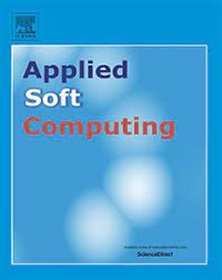Art style classification via self-supervised dual-teacher knowledge distillation
IF 7.2
1区 计算机科学
Q1 COMPUTER SCIENCE, ARTIFICIAL INTELLIGENCE
引用次数: 0
Abstract
Art style classification plays a crucial role in computational aesthetics. Traditional deep learning-based methods for art style classification typically require a large number of labeled images, which are scarce in the art domain. To address this challenge, we propose a self-supervised learning method specifically tailored for art style classification. Our method effectively learns image style features using unlabeled images. Specifically, we introduce a novel self-supervised learning approach based on the popular contrastive learning framework, incorporating a unique dual-teacher knowledge distillation technique. The two teacher networks provide complementary guidance to the student network. Each teacher network focuses on extracting distinct features, offering diverse perspectives. This collaborative guidance enables the student network to learn detailed and robust representations of art style attributes. Furthermore, recognizing the Gram matrix’s capability to capture image style through feature correlations, we explicitly integrate it into our self-supervised learning framework. We propose a relation alignment loss to train the network, leveraging image relationships. This loss function has shown promising results compared to the commonly used InfoNCE loss. To validate our proposed method, we conducted extensive experiments on three publicly available datasets: WikiArt, Pandora18k, and Flickr. The experimental results demonstrate the superiority of our method, significantly outperforming state-of-the-art self-supervised learning methods. Additionally, when compared with supervised methods, our approach shows competitive results, notably surpassing supervised learning methods on the Flickr dataset. Ablation experiments further verify the efficacy of each component of our proposed network. The code is publicly available at: https://github.com/lm-oc/dual_signal_gram_matrix.
求助全文
约1分钟内获得全文
求助全文
来源期刊

Applied Soft Computing
工程技术-计算机:跨学科应用
CiteScore
15.80
自引率
6.90%
发文量
874
审稿时长
10.9 months
期刊介绍:
Applied Soft Computing is an international journal promoting an integrated view of soft computing to solve real life problems.The focus is to publish the highest quality research in application and convergence of the areas of Fuzzy Logic, Neural Networks, Evolutionary Computing, Rough Sets and other similar techniques to address real world complexities.
Applied Soft Computing is a rolling publication: articles are published as soon as the editor-in-chief has accepted them. Therefore, the web site will continuously be updated with new articles and the publication time will be short.
 求助内容:
求助内容: 应助结果提醒方式:
应助结果提醒方式:


